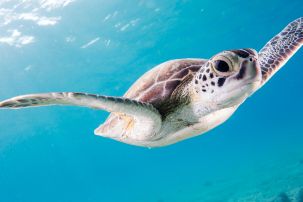Lesson summary
This activity asks students to consider the impacts of pollution on our ocean environments by designing and creating a poster.
Learning intentions:
Students will...
- recognise that rubbish is a big problem for underwater biodiversity
- understand that we all have a responsibility in preventing rubbish from going into our oceans.
Lesson guides and printables
Lesson details
Curriculum mapping
Australian Curriculum content descriptions:
Year 3 English:
- Draw connections between personal experiences and the worlds of texts, and share responses with others (ACELT1596)
Year 3 Science:
- Represent and communicate ideas and findings in a variety of ways such as diagrams, physical representations and simple reports (ACSIS060)
Year 4 English:
- Discuss literary experiences with others, sharing responses and expressing a point of view (ACELT1603)
Year 4 Science:
- Represent and communicate ideas and findings in a variety of ways such as diagrams, physical representations and simple reports (ACSIS071)
Syllabus Outcomes: ST2-4WS, EN2-11D.
Time required: 60 mins
Level of teacher scaffolding: Medium – Assist students in creating posters.
General capabilities: Critical and creative thinking, Literacy.
Cross-curriculum priority: Sustainability OI.2.
Resources required
- Art materials
Additional info
This lesson has been created in partnership with WWF-Australia. Earth Hour is the world’s largest community-driven climate change campaign. At the centre of Earth Hour is switching off lights to show a commitment to taking action.
Thousands of teachers use Earth Hour’s education program to enrich their curriculum and provide pathways for young people to create change in their world.
For the most up to date Earth Hour dates, times, and events, check here.


Welcome back!
Don't have an account yet?
Log in with:
By signing up to Cool.org you consent and agree to Cool's privacy policy to
store, manage and process your personal information. To read more, please see
our privacy policy here(Opens in new tab).
Create your free Cool.org account.
Many of our resources are free, with an option to upgrade to Cool+ for premium content.
Already have an account?
Sign up with:
By signing up to Cool.org you consent and agree to Cool's privacy policy to
store, manage and process your personal information. To read more, please see
our privacy policy here(Opens in new tab).